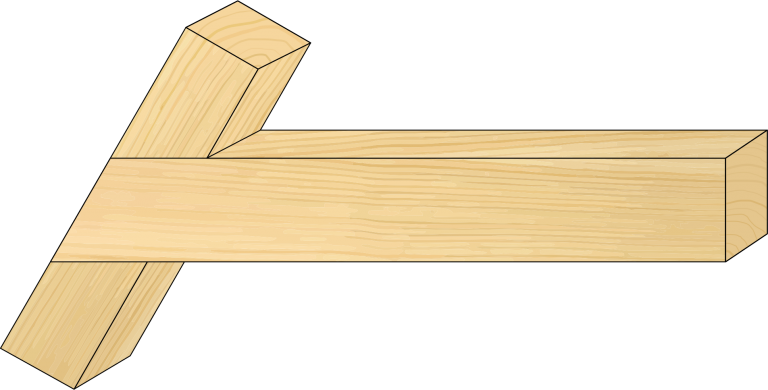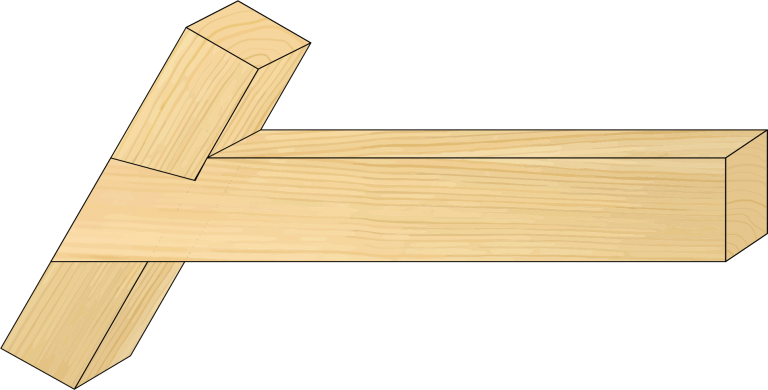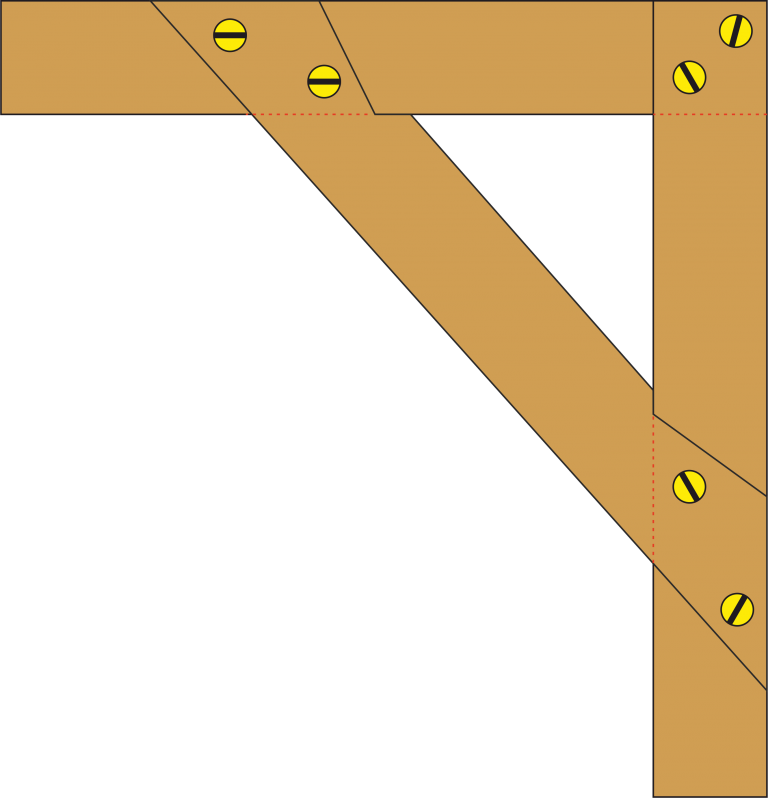
Teaching and learning resources for the construction industry with NVQ and Diploma Assessment Criteria
The learner can:
1.1 identify Personal Protective Equipment (PPE) appropriate to
constructing Angled Halving Joints has already been covered in the following link
Personal Protective Equipment (PPE)
1.2 identify Materials required to construct Angled Halving Joints.
Has already been covered in the following link.
1.3 identify types of Halving Joints
Has already been covered in the following link.
1.4 identify Tools and Equipment required to construct Through Mortice & Tenon Joints.
The following tools have already been covered in the following links.
Drill & Screwdriver
Try Square
Marking Gauge
Rule
Tenon Saw
Bevel-Edged Chisel
Bench Hook
G-Cramp
Sash Cramp
Smoothing Plane
Block Plane
Mallet
Sliding Bevel
Abrasive Paper

Angled Half Lap Joints are very similar in construction to the Half Lap Joint instead of being 90° intersections they can have an angle between 7° and 15°.
This type of joint still comes under the category of halving joints which has two half components forming one complete component which is flush on all sides and uniformed in a thickness.


Haft-Dovetail Lap Joint has all the characteristics of halving joints which are stronger versatile joints that can be seen in wall brackets and furniture.


In this assessment it is used to construct a Wooden Building Square, the dovetail resists the legs of the Building Square being pulled apart due to the wedge shape of the dovetail.